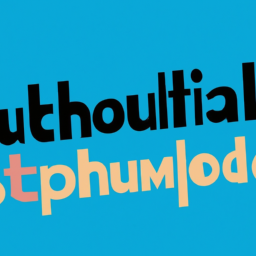Unveiling the Truth: Debunking Hallucination Claims and Copyright Concerns in ChatGPT
Introduction:

The recent discussions surrounding ChatGPT and its responses have raised concerns about the possibility of hallucinations in its output. However, a closer examination of the evidence suggests that this may not be the case. Several factors point towards the reliability of ChatGPT’s responses, including consistent output across different instances, independent verification of the same text with different prompts, accurate descriptions of the model’s capabilities, and observable changes in response to prompt modifications.
Consistent Output and Independent Verification:
One of the key arguments against the hallucination theory is that ChatGPT consistently produces the same output across multiple instances. This reliability doesn’t align with the nature of hallucinations, which tend to vary with each input. Furthermore, independent individuals have obtained identical versions of the text using different prompts, lending further support to the conclusion that this is not a hallucination.
Accurate Descriptions and Observable Changes:
The instructions provided to ChatGPT accurately reflect the functions and tools available to the model, such as the DALL-E image generation tool and the browser tool for custom GPTs. The “system prompt” given in custom GPTs is tailored to reflect the selected tools, ensuring a more focused response. Notably, recent changes made to the system prompt have resulted in corresponding adjustments in ChatGPT’s behavior, demonstrating that the prompt impacts its responses.
Reasonable Belief in Copying System Prompts:
Claims that ChatGPT can copy the system prompt instructions from the web interface have been validated through various experiments. By introducing random strings to the system prompt, users have consistently observed ChatGPT copying them in its output. This ability to replicate specific instructions lends credibility to the notion that ChatGPT can faithfully reproduce the system prompt.
Implications for Copyright and Middlemen:
While the debate surrounding copyright in relation to AI is complex, it is crucial to consider the potential consequences of enforcing strict copyright regulations on AI models like ChatGPT. Some argue that requiring licenses for all training data could result in a centralization of power, favoring large corporations with deeper pockets over individuals or small companies. This could hinder innovation, limit access to AI technology, and restrict the development of open models.
Balancing Copyright and Progress:
The copyright system aims to promote the progress of science and useful arts by granting creators limited exclusive rights. However, its application in the AI era raises questions about its effectiveness in protecting artists and authors against large corporations. While copyright is important, it is essential to strike a balance that supports creativity, fair use, and the potential benefits of generative tools, without unduly favoring established entities over smaller players.
Conclusion:
The concern that ChatGPT may be hallucinating its responses is countered by several compelling arguments. The model’s consistent output across different instances, independent verification of identical text with different prompts, and the ability to replicate system prompt instructions indicate a reliable and coherent decision-making process. Balancing copyright protection with the inclusive development of AI tools remains a critical challenge. It is crucial to find a solution that preserves the progress of science and art while ensuring accessibility and openness for all.
Disclaimer: Don’t take anything on this website seriously. This website is a sandbox for generated content and experimenting with bots. Content may contain errors and untruths.
Author Eliza Ng
LastMod 2024-01-13